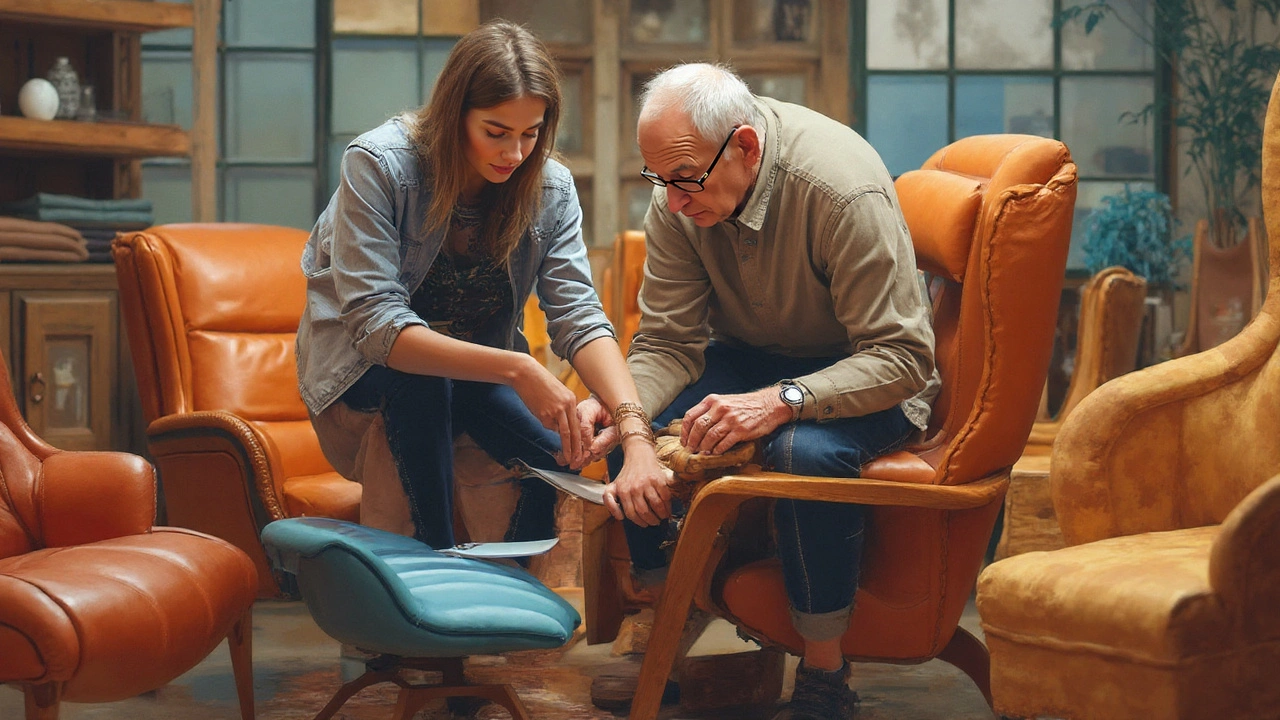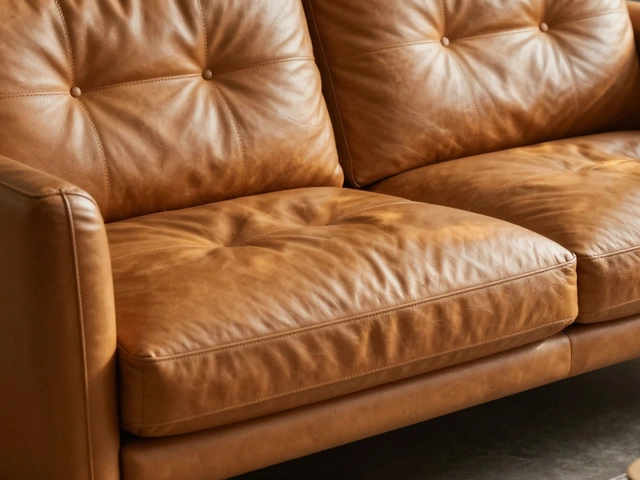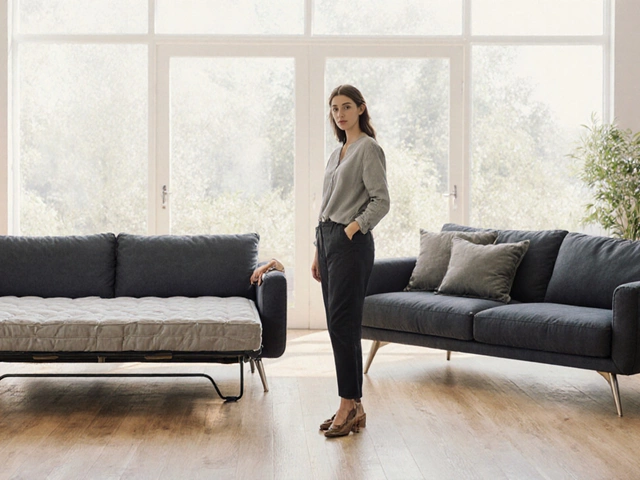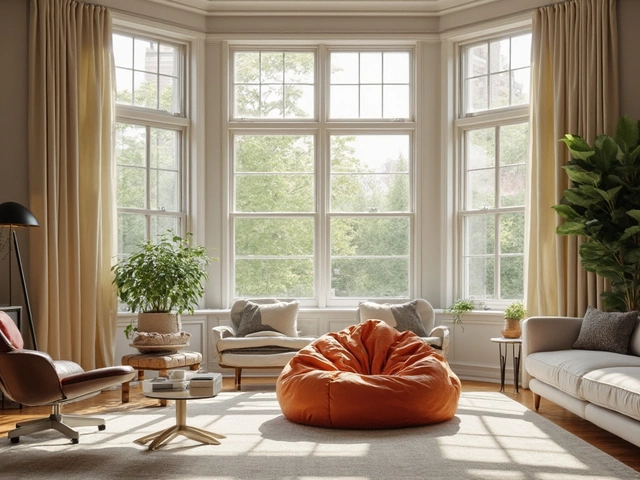Ever sat in a chair that felt like it could snap at any second? Or maybe one that looked spot-on at the store but started squeaking after only a month? It’s not rocket science: a lot of chairs out there just aren’t made to last. On the flip side, you can still find chairs built to survive a rugby scrum in your living room. The trick is knowing what separates a workhorse from a wobbly disaster. Here’s what you really need to look for to spot a chair that’s worth your hard-earned cash.
The Building Blocks: What Makes a Chair Sturdy and Lasting
Every great chair starts with solid bones. If you flip a chair upside down in a store (go for it—staff might stare but you’ll know what’s up), check the framework. The strongest chairs use hardwood frames—think oak, birch, maple, or sometimes beech. Pine might show up, but it’s softer and can warp over time, especially if you tend to drop into your seat. Hardwoods hold screws and glue better, which means fewer wobbles down the line.
That brings us to joinery. Staples and nails might keep a chair steady at first, but real longevity comes from joints held with wooden dowels, mortise and tenon, or at the very least, heavy-duty screws reinforced with glue. Factory glue isn’t all created equal, by the way. The best chairs use industrial PVA glue that actually seeps into the wood grain. Some top brands will double up with metal brackets at weight points for backup strength.
Don't forget about finish. A solid finish does more than just make things shiny. It shields the chair frame from humidity and the bumps of daily life. Polyurethane varnish is king for everyday chairs—kids, pets, shoes scraping underneath? Bring it on. Some boutique brands still use oils and waxes for a more natural vibe, but these need more maintenance and won’t protect against stains or spills as well.
Legs matter, too. They shouldn’t flex when you push down. Run your hand underneath; you should feel a smooth, clean underside with no rough spots or splinters. High-end chairs sometimes feature “stretchers,” those horizontal bars between legs for extra stability. These aren’t just old-fashioned—they’re a killer stability trick that builders have used for centuries.
Looking at hardware? Metal bolts and brackets feel cold to the touch and rarely rust if they're stainless steel or brass. If things feel light or plasticky, especially on moving parts, it’s a sign the maker is cutting corners. Even the humble screw cap tells you something: good quality chairs usually hide screw heads with wooden plugs or color-matched covers.
According to a 2023 sourcing report by the International Furniture Research Group, properly joined hardwood chairs had a defect rate under 2% within their first three years of use, compared to 17% for softwood or particle board frames with stapled joints. That’s a pretty big difference when you want to avoid a mid-dinner collapse.

Comfort Counts: Materials, Padding, and Ergonomic Support
Even if a chair is built to last decades, you won’t care if it’s not comfortable. Quality chairs pay as much attention to the seat and back as they do to the frame. First up is padding. Cheap foam will flatten fast, leaving you perched on what feels like a plank. High-resilience foam (HR foam) bounces back after long use. If you can, give it the press test—if the cushion springs back quickly and smoothly rather than leaving a dent, it’s probably HR foam.
Let’s talk fabric. Synthetic microfiber leads the pack for families and folks who spill a lot. It’s tough, stain-resistant, and simple to spot clean. Leather is the classic luxury pick—it ages well if cared for, but can be ruined by scratches and sunlight (Auckland sun is no joke, trust me). Real leather’s grain looks uneven, not plastic-smooth. If you’re vegan or allergic, high-end vinyl (sometimes called faux leather) can be a solid backup, though it won’t last as long as the real thing.
If it’s a wooden or rattan chair, you want to see even, tight weaving on the seat and back. It should feel taut, not saggy. For woven rush or cane, the strands should be continuous, not pieced together, and secured tight at the joints. Poorly woven seats might snap within a year.
The ergonomics question trips a lot of people up. Try the chair if you can: your feet should rest flat on the floor, and your knees should bend at about 90 degrees. Lumbar support matters more than most folks think. The best chairs have a slight inward curve in the lower back area, reducing slouching fatigue. According to an Auckland University study from 2022, local office workers using proper lumbar support chairs reported about 40% fewer aches over three months compared to those stuck with flat-back chairs.
Armrests are another spot where quality shows. Good ones are firmly attached, feel smooth, and don’t wiggle. Ideally, they’re padded or contoured to support the forearm without pressing into your elbow. And seat edges shouldn’t be sharp—rounded or waterfall edges relieve pressure behind your knees, stopping your legs from going numb if you sit long.
Looking for adjustability? It’s not just for office chairs. More lounge and dining designs offer features like tilt, height adjustments, or even removable cushions. Quality mechanisms here will be metal, not plastic, and should glide without sticking. Cheap adjustable chairs often fail after a few months—if you hear grinding, stiff clicks, or if the chair sags under you, move on.
The fabric’s Martindale score—a test for abrasion resistance—will sometimes be listed in catalogs. Anything over 25,000 cycles works for heavy household use. If you have pets, look for tightly woven materials: they resist snagging from claws.

Spotting Quality in Design, Details, and Where to Shop
Not all quality is hidden inside. Sometimes, how a chair is designed and finished can tell you everything. Look for consistent wood grain on visible parts—it means the maker paid attention while matching pieces. The finish should be even, with no bubbling or cloudy spots under the surface. In places where parts meet, small gaps or uneven seams are red flags. Professional makers sand and polish these spots so they’re flush.
Inspect under the seat. You’ll often see webbing or springs in high-quality chairs, especially in sofas or plush dining seats. Eight-way hand-tied springs are the gold standard for comfort and durability, though you mostly find these in higher-end brands now. Sinuous springs (zigzag patterns) or strong webbing are almost as good if sized properly, but avoid thin elastic bands—they sag fast.
Does it have a maker’s mark or brand label? Reputable manufacturers stand by their work and usually tag their chairs clearly, along with a model or batch number. You can use these details to check reviews or see how older versions have held up over time. Be wary of labels glued on crookedly or that peel off—serious makers don’t take shortcuts even here.
Assembly is another tell. Some chairs still come flat-packed or in parts, which doesn’t always mean lower quality. But the parts should fit together with little effort and zero wobble, with pre-drilled holes lining up cleanly. Cheap kits often require you to force pieces into place, which stresses the joints from day one.
When shopping, don’t just look at flashy brands. Talk to staff or check online for transparency about where and how chairs are made. Good companies will list materials, joint types, weight limits, and warranty periods. Most warranties for sturdy chairs run five years or longer, and you can bet on at least a two-year minimum for honest products. Anything less could be a red flag.
The price tag doesn’t always seal the deal, but it’s a clue. Here’s a truth bomb: true high-quality dining chairs in New Zealand shops rarely run below NZD 150 each, and more often are NZD 250-500+ if you’re aiming for long-term ownership. A classic mid-century design fetches NZD 1000 or more at auction (and for good reason, given their continued strength after 50+ years). Avoid the $40 “bargain” seat unless you enjoy the smell of glue and the sound of screws working loose.
Eco and health claims can be important if you care about what goes into your home. Solid rubberwood and bamboo are eco-friendly, tough choices that don’t break the bank. Fabric or foam should be labeled “low-VOC” or “Greenguard certified,” which basically means fewer nasty chemicals off-gassing into your living space.
| Feature | Low-Quality Chair | High-Quality Chair |
|---|---|---|
| Frame Material | Softwood, Particleboard | Hardwood (Oak, Birch, Maple) |
| Joinery | Staples, Basic Screws | Mortise & Tenon, Dowels, Metal Brackets |
| Seat Padding | Low-Density Foam | High-Resilience Foam |
| Fabric | Low-Abrasion Polyester | Microfiber, Leather, High-Abrasion Fabrics |
| Warranty | 6-12 months | 2-10 years |
| Finish | Thin Lacquer/Veneer | Polyurethane/Varnish/Oil |
The secondhand market is a treasure trove for quality. Old chairs, especially New Zealand’s own Parker Knoll, Danske Møbler, or imported Eames designs, have stood up to decades of Kiwi family life. Feel free to ask sellers about repairs or see if there’s movement in the joints.
End of the day, a chair is more than just something to park your backside. It’s a daily tool. When you spot quality, you invest once and sit easy for years—literally. Got a favorite chair that’s survived generations in your whānau? Odds are, it passed every one of these checks, even if your nana didn’t label it "ergonomic." Find your high-quality seat, and you’ll forget all about flatpack regret.





